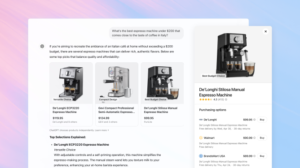How Some Of Today’s Most Trending Startups In Bulgaria Attracted Their First Customers – Part 1: B2B Software

When a startup is born nobody knows about its barely existing product. The founders have next to no marketing budget, just lots of space for experimentation and creativity. Investors want to see customer traction but customers often also want to see that someone else has tried the solution in question before. So, what strategies and approaches did young ventures with Bulgarian roots use to find and attract their first users? How did they convert them into paying clients? How did these tactics evolve as the company grew? At Trending Topics Southeast Europe, we will explore these topics and try to uncover commonalities as we hope to provide inspiration for the next generation of entrepreneurs in the region. And, we start with B2B software products, a category many local startups choose to pursue. *
Today, the mobile customer engagement platform Leanplum has over €105m in funding and has facilitated more than 150 billion messages in the last year alone. In February 2020, after winning over 28k customers in two years, SMS marketing venture SMSBump achieved the biggest exit of a company backed by a Bulgarian venture capital firm. Officially started in 2018, expense management startup Payhawk has already raised over €3.5M in funding, grown to a team of 21, and opened offices in Sofia, Berlin, and London. Last but not least, eCommerce platform CloudCart recently closed two investment rounds in quick succession after attracting over 2000 paying clients and enabling over three million merchant transactions.
Yet, eight years ago none of these companies had any customers, investments, or traction; three of them did not even exist as companies until very recently.
How did Leanplum find its first users & clients?
Outbound: Conference (plus a startup accelerator)
Leanplum launched in 2012 with a bold vision and idea to create a marketing automation company that transforms the industry and helps forward-looking brands meet their customers’ needs in real-time. “We didn’t have a product, any clients, or any investors at that time. Yet, we didn’t wait for our first customers to come to us – says Momchil Kyurkchiev, Leanplum co-founder and CPO – we went out and found them ourselves.”
As part of TechStars’ Accelerator Program, Kyurkchiev and his co-founder Andrew First visited a mobile game conference in Seattle, made a list of all the participants there, and gave themselves two days to personally speak to every single one of them.
What strategies and tactics did Leanplum use to win paying customers and not just users?
Product co-creation
“It was especially difficult to find our first customer, as we offered an SDK that ran code into a company’s app. Our first customer had to be willing to take on the risk and trust us with their data, one of the most precious assets for a company. Eventually, we found customers for whom the benefits outweighed the risks,” shares Andrew First, co-founder and chief technologist at Leanplum.
Leanplum started as a paid solution from the very beginning. It only offered free service to small customers who were essentially beta testing our product. It was important to help customers understand Leanplum’s value proposition around increasing ROI and the significant costs involved such as data collection and data processing.
“The benefit of being among the first customers was that we were able to work quite closely with their teams and let them have a significant influence on our product development based on specific needs and use cases,” continues First.
What is Leanplum’s current strategy for attracting clients and how did it change over the years?
Customer success stories
Today, Leanplum is a multi-channel marketing company providing services to more than 200 customers worldwide in industries like gaming, e-commerce, media and entertainment, social networking, financial services, and others.
“Our best advocates to attract new customers are our existing ones. With the continued explosion of mobile apps and the role of mobile devices as the key touchpoint for brands to maximize customer loyalty and lifetime value, it’s imperative that companies use powerful and coordinated multi-channel engagement tools to connect with their users at all times and through all digital channels. We are excited to oversee Leanplum’s expansion into additional global markets, expanding the total available market (TAM) while also strengthening relationships with already existing partners,” tells Trending Topics SEE George Garrick, CEO of Leanplum.
What strategies and tactics did Payhawk use to find its first customers?
Corporate accelerator + investor network
“When you start a B2C product, you really go to friends and family and ask them to try out the product. Eventually, they will recommend it to their friends and so on and so forth. With B2B products in the Fintech sector, it’s essential to have solid partners who can help you to get on track from the only beginning. In 2019 we were part of Visa’s innovation program, which gave us exposure to quite some companies and experts in the field. At the same time, our investors from Eleven Ventures did some intro to companies from their portfolio, tells us Hristo Borisov, founder and CEO at Payhawk.
What is Payhawk’s current strategy for attracting clients and how did it change over the years?
️ A mix of inbound and outbound
Today, Payhawk is testing different channels and adapting literally on a daily basis. The company is running both inbound and outbound activities, including cold calling, email marketing, search ads but also content marketing campaigns and Facebook campaigns.
“We are very data-driven, so if the performance is not there we are ready to stop/pause/adjust campaigns and channels at any time. Or respectively to scale and push them,” shares Daniela Danailova, head of marketing at Payhawk.
How did SMSBump find its first customers?
Seeking out the places customers use to research a product + Guerrilla marketing + SEO
“We always like practicing swimming in a pool rather than the ocean so we always penetrate ecosystems with well-established marketplaces. In this way whenever there is a need the users will go to the official app store and would search for a solution there. Since no one knew our solution we went guerrilla marketing and used good old SEO tactics along with identifying where the community hangs around and discusses apps before making a decision. When we married both approaches we started getting installs,” explains Mihail Stoychev, founder and CEO at SMSBump.
What strategies and tactics did SMSBump use to convert users into paying customers?
SMS, E-mail, Slack, and Intercom Automation
Prior to making SMSBump, the team developed over 120 products in their other company iSenseLabs. This experience of creating products, getting them validated, and making decisions on whether to double down on some and leave others to float taught the founders a lot about design.
“I am a huge believer in product-led growth. I love UX/UI and love easy to use simple things. As a result of our previous experience of creating products that stick we’ve applied a series of tactics including:
- Automated nudge emails or texts (yes, we’re eating our own dogfood)
- a) whenever they are about to end up their free trial
- b) whenever metrics show that they are ready to upgrade
- c) whenever they are out of balance
- Intercom which triggers different sequences based on whether someone is a new user or an existing one (based on usage, enablement of some features and not others, etc.)
- Whenever someone installs our product, Shopify and BigCommerce can provide us with information about the customer (how many orders they have, customers, etc.). We created a Slack channel where this info was pushed, so we quickly identified leads that we can upsell. What we did was an automated email from their account manager inviting them for a call, which was super personal and effective,” elaborates Stoychev.
What is SMSBump’s current strategy for attracting paying customers, now as a part of Yotpo?
Data science + great UX + online events and communities
Now, after the acquisition from the much bigger eCommerce marketing platform Yotpo, SMSBump continues to be following a product-led approach, with lots of queues, scavenger hunt, and tutorials while the user is being on-boarded into the app, till they reach the “a-ha moment”. Also being part of a much larger organization that has data science teams discovers angles of information the team did not have before.
Besides this, during the corona times, SMSBump utilized online conferences, webinars, and its partners (e.g. agencies) to get leads.
“Other than activating existing users and making them paying customers I really love Facebook groups/communities, YouTube as well as Discord and Slack private channel. I believe that you need to find the heartbeat of a community and be where the action is,” adds Stoychev.
How did CloudCart find its first customers?
Friends and personal network
The first users/clients of CloudCart were all people and businesses the founders knew personally. “As we all know, it’s really hard for a brand new company to amass a customer base from the get-go. And in order to get some initial traction, it’s always smart to look around yourself – your own friends and acquaintances, who might be interested in and benefit from using your product/service. Approach them first in order to validate your idea, product, or service,” shares Evgeni Yordanov, Chief Marketing Officer at CloudCart.
What strategies and tactics did CloudCart employ to get customers to use the product?
(Very) Personalized Demos
The strategy for CloudCart was simple – do a personalized full-fledged and fully-working eCommerce solution for each and every one of them.
“Potential customers believed at the time that it was just a simple DEMO, but in fact, it wasn’t. The “wow” factor kicked in when they “felt” it as this is their brand new online store – with a beautiful design and a myriad of tools (marketing and otherwise), which they didn’t have easy access to before. And it didn’t hurt that the store came with their products and services already put up there on display – ready to be sold. So each and every one of them was like “Where should I sign?”. And the answer to that question was even simpler “Nowhere. Just log in to CloudCart, put in your card, and start selling from Day 1. You decide how long you would like to use CloudCart’s services yourself”. They’ve been with us ever since,” tells us Yordanov.
*Expect next: Part 2: How the most trending deep tech and hardware startups in Bulgaria attracted their first customers and part 3: How the most trending B2C startups in Bulgaria attracted their first customers





























